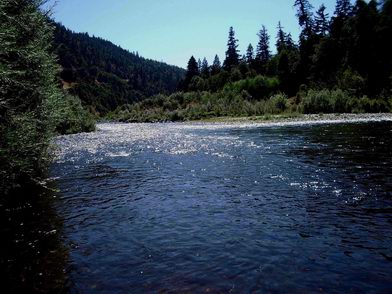

 MaxDepth Aquatics, Inc.
MaxDepth Aquatics, Inc.
|
|
|
Diamond Lake, Oregon
Diamond Lake was apparently formed as ash and tephra from the eruption of Mt. Mazama (now Crater Lake) blocked Lake Creek, forming a broad, relatively shallow lake in the Cascades. The lake was fishless until it was first stocked with trout in 1910. The trout fisheries was very successful until a minnow, the tui chub (Gila bicolor), was inadvertently introduced. The lake was treated with rotenone in 1954 and the lake appeared to remain free of chub until about 1990. The trout fishery declined and cyanobacteria (primarily Anabaena flos-aquae) proliferated, forcing lake closures in 2001-2003. MaxDepth Aquatics scientists first became involved in studying Diamond Lake in 1996, when J. Eilers collected a sediment core for analysis of lake water quality changes. Since then, Eilers has supervised additional sediment studies of Diamond Lake and has directed numerous other investigations of the lake and its watershed including bathymetry, fisheries, water quality monitoring, database development, and TMDL modeling. The TMDL developed for Diamond Lake is believed to be the first TMDL that is based on the abundance of an introduced fish species. The criteria for future fish stocking will now be based on an index that incorporates biological and water quality metrics that can be used by fisheries biologists with the Oregon Department of Fish and Wildlife.
|
|
Copyright © 2003
MaxDepth Aquatics, Inc.
|